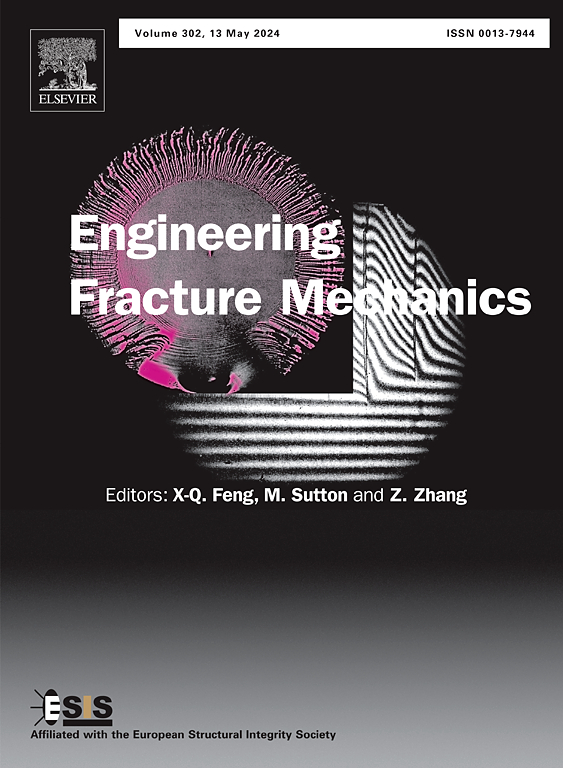Effect of different CFRP strengthening methods on fracture parameters of concrete beam
IF 4.7
2区 工程技术
Q1 MECHANICS
引用次数: 0
Abstract
In order to investigate the effect of CFRP strengthening methods on the fracture performance of concrete structure with cracks, the fracture experiments of concrete beams with cracks strengthened by different CFRP bonding layers and prestressed CFRP were carried out in this paper. The formula for the fracture parameters of CFRP strengthened concrete beam was given by the analytical method, and the variation rules of the fracture parameters and AE parameters were analyzed by combining the acoustic emission (AE) technique. The experiment results show that, when the number of CFRP bonding layers is 3 or 4, the fracture failure behavior of concrete beams is similar to the “over-reinforced damage” mode, which is not conducive to the design and application of practical engineering. The variation rules of ultimate load, crack extension length, fracture toughness and fracture energy are analyzed, which is pointed out that bonded single-layer prestressed CFRP has the optimal strengthening effect and crack-resistant performance for concrete beam with crack. The fracture damage variables are characterized by the change rate of crack propagation length and AE energy. It is found that the damage evolution curve showed a three-stage pattern of inverted “S” and positive “S” shapes, which explains the damage and fracture behavior of CFRP strengthened concrete beam and verifies the feasibility of AE parameter characterization of damage effects.
求助全文
约1分钟内获得全文
求助全文
来源期刊
CiteScore
8.70
自引率
13.00%
发文量
606
审稿时长
74 days
期刊介绍:
EFM covers a broad range of topics in fracture mechanics to be of interest and use to both researchers and practitioners. Contributions are welcome which address the fracture behavior of conventional engineering material systems as well as newly emerging material systems. Contributions on developments in the areas of mechanics and materials science strongly related to fracture mechanics are also welcome. Papers on fatigue are welcome if they treat the fatigue process using the methods of fracture mechanics.

 求助内容:
求助内容: 应助结果提醒方式:
应助结果提醒方式:


